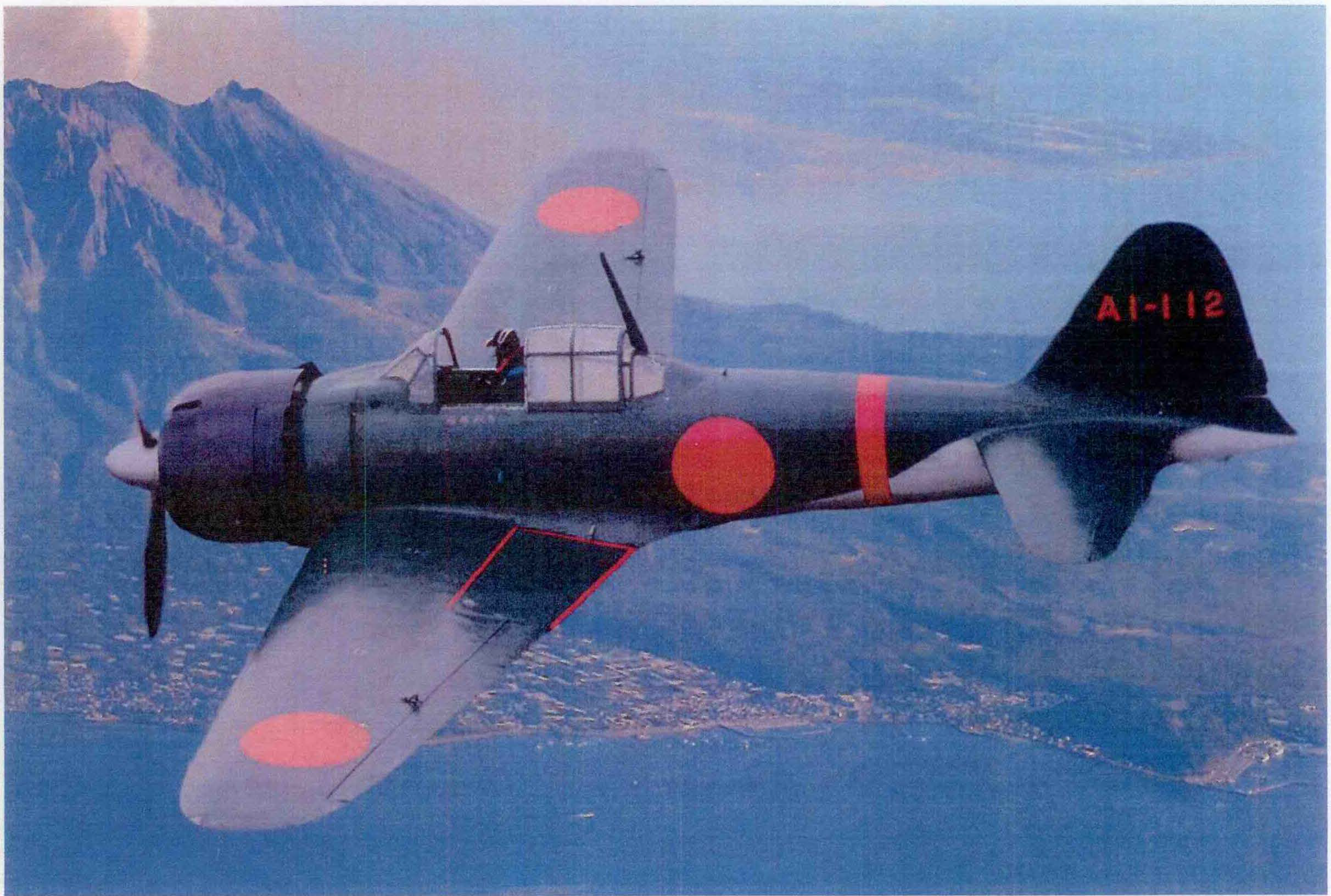Mitsubishi
A6M3 ZERO
Mitsubishi established in 1870 grew into a major industrial giant in Japan, engaging in shipping, heavy industry, and aviation. The company produced the A6M Zeke “Zero” fighter during WWII, known for its unique design and labor-intensive construction. Mitsubishi manufactured 10,939 A6M Zeros from 1939 to 1945. Initially, the Zero was highly regarded as the most capable carrier-based fighter globally, praised for its exceptional maneuverability and long range. It achieved a kill ratio of 12 to 1, solidifying its reputation as a formidable dogfighter. However, by 1943, the Zero's effectiveness waned compared to allied aircraft due to design limitations such as hydraulic boosting for ailerons and rudders, pilot protection, and firepower.
Serial Number 3858 History
Serial number 3858 has quite a storied past, originating from its delivery to the Imperial Japanese Navy Air Group No.3 in 1942. Abandoned at the Babo Airfield in New Guinea, the aircraft suffered from bomb damage, bullet holes, and corrosion before being salvaged by renowned aircraft salvager Bruce Fenstermaker decades later. In June of 1991, the Zero made its way to California, under the care of the Museum of Flying in Santa Monica, before being sent to Russia for restoration by Flight Magic, Inc. After three years of extensive restoration work, the Zero returned to California in 1997 for the final assembly. Registered as N553TT and granted a certificate of airworthiness, the aircraft went on to make a Hollywood appearance in the 2001 film "Pearl Harbor," logging an impressive 55 hours of flight time. Fagen Fighters WWII Museum acquired serial number 3858 in 2021, adding another chapter to its remarkable history.





